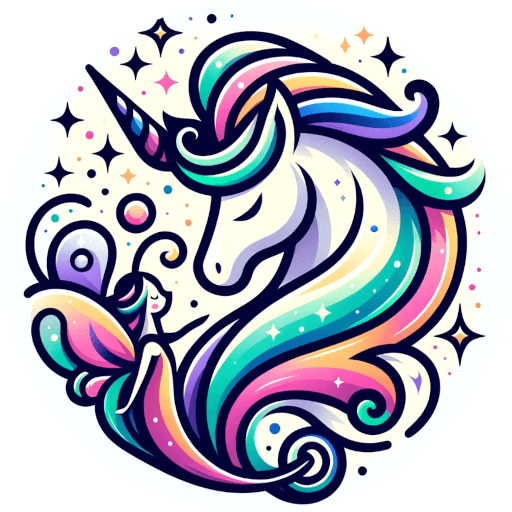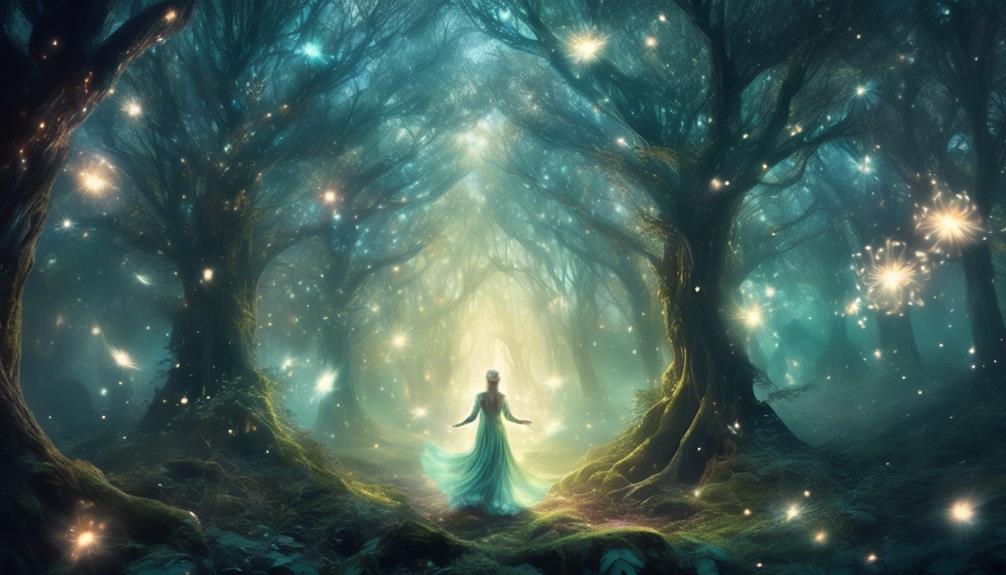The Origins of Fairy Godmothers
The figure of the fairy godmother, known for her magical and benevolent nature in folklore and mythology, has origins that remain shrouded in mystery. While the exact genesis of this archetype is difficult to pinpoint, its influence spans across various cultures and literature, indicating a widespread and enduring significance.
Enigmatic Beginnings
The origins of fairy godmothers are veiled in the depths of time, making it challenging to trace their exact inception. Ancient legends and tales offer glimpses into the mythical beginnings of these mystical beings, but definitive sources are elusive, adding to the enigma surrounding their origins.
Enduring Influence
Despite the elusive nature of their origins, fairy godmothers have left an indelible mark on cultural narratives and literary works. Their enduring influence is evident in stories from different parts of the world, highlighting the universal appeal and timeless allure of the fairy godmother figure.
In conclusion, the origins of fairy godmothers remain enigmatic, with their influence transcending geographical and cultural boundaries, making them a captivating subject of study in the realm of folklore and mythology.
Key Takeaways
The Origins of Fairy Godmothers
The origins of the fairy godmother figure, known for her magical and benevolent nature in folklore and mythology, have remained mysterious throughout history. While the exact genesis of this archetype is challenging to pinpoint, its influence spans various cultures and literature, indicating a widespread and enduring significance.
Enigmatic Beginnings
The origins of fairy godmothers are deeply rooted in ancient legends and tales, making it challenging to trace their exact inception. Definitive sources are elusive, adding to the enigma surrounding their origins.
Enduring Influence
Fairy godmothers have left an indelible mark on cultural narratives and literary works. Their enduring influence is evident in stories from different parts of the world, highlighting the universal appeal and timeless allure of the fairy godmother figure.
In conclusion, the origins of fairy godmothers remain enigmatic, with their influence transcending geographical and cultural boundaries, making them a captivating subject of study in the realm of folklore and mythology.
Ancient Mythical Influences
Ancient Mythical Influences on the Concept of Fairy Godmothers
Ancient myths and legends from various cultures have influenced the concept of fairy godmothers.
In Greek mythology, deities like Hera and Aphrodite were associated with the idea of benevolent female figures overseeing the well-being of mortals.
Similarly, ancient Egyptian influences from goddesses like Isis and Hathor contributed to the concept of fairy godmothers as protectors and guides.
Additionally, Mesopotamian origins, with deities such as Ishtar and Inanna, further shaped the archetype of powerful, nurturing female figures.
These ancient mythologies provided the foundation for the modern interpretation of fairy godmothers, emphasizing their role as wise, magical beings who offer guidance and assistance to those in need.
The enduring influence of these ancient myths continues to resonate in contemporary fairy tales and folklore.
Folklore and Cultural Origins
Influence of Ancient Myths and Legends on Fairy Godmothers
The concept of fairy godmothers has been shaped by the influence of ancient myths and legends from various cultures. These traditions have contributed to the evolution of the fairy godmother figure, each adding historical significance to the narrative.
For example, in Greek mythology, the idea of a protective female deity can be seen in figures such as Athena and Artemis. Similarly, in Celtic folklore, the character of the benevolent fairy has parallels to the concept of a fairy godmother.
Cross-Cultural Exchanges and Symbolic Meanings
Cross-cultural influences have played a pivotal role in shaping the symbolic meanings associated with fairy godmothers. This blending of diverse beliefs and customs has created a multifaceted character.
For instance, the incorporation of traits and abilities, such as granting wishes and providing guidance, resonates with people from various backgrounds. These influences have enriched the overall portrayal of fairy godmothers in folklore, fostering a universal appeal that transcends borders.
Historical Significance and Symbolic Meanings
The historical significance and symbolic meanings attributed to fairy godmothers continue to be shaped by the amalgamation of diverse cultural influences. This ongoing process contributes to the universal appeal of fairy godmothers in folklore.
Fairy Godmothers in Literature
Fairy Godmothers in Classic Literature
Fairy godmothers are prominent figures in classic literature, often playing a pivotal role in guiding and assisting the main characters. They're commonly depicted as wise and benevolent beings who bestow magical gifts or aid the protagonist in times of need. Examples of literary portrayals of fairy godmothers can be found in Charles Perrault's 'Cinderella' and the Brothers Grimm's 'Sleeping Beauty'.
These enchanting figures symbolize protection, guidance, and the fulfillment of destiny. They represent the embodiment of hope and the belief in the possibility of transformation, making them enduring symbols in literature.
Through their interventions, fairy godmothers highlight enduring themes of kindness, resilience, and the triumph of good over evil.
Evolution of Fairy Godmother Archetype
Evolution of Fairy Godmother Archetype
The portrayal of fairy godmothers in classic literature has undergone an evolution, moving beyond their traditional roles as magical helpers. In contemporary retellings, fairy godmothers are depicted as strong, independent figures who empower protagonists to take charge of their destinies.
This shift reflects changing societal perceptions of power and agency, as well as an increased awareness of the importance of diverse and inclusive role models in literature.
The cultural significance of fairy godmothers has expanded to encompass a broader range of values and attributes, making them more relatable and relevant to modern audiences. This evolution has allowed the archetype of the fairy godmother to maintain its timeless appeal while adapting to contemporary sensibilities.
Fairy Godmothers in Popular Culture
The Influence of Fairy Godmothers in Popular Culture
Fairy godmothers have become prevalent characters in various forms of media and entertainment. Their portrayal in modern interpretations has evolved significantly, departing from traditional depictions. Cinematic representations, especially, have played a pivotal role in this evolution.
Disney's classic animated films and their live-action adaptations offer examples of this reimagining, catering to contemporary audiences. These modern interpretations have expanded the roles and traits of fairy godmothers, reflecting the shifting societal values and expectations.
Consequently, these captivating figures continue to inspire diverse audiences through their dynamic and evolving roles in popular culture.
Enduring Legacy and Impact
The Enduring Legacy and Impact of Fairy Godmothers
Fairy godmothers have maintained their significance in popular culture through their evolving roles and expanded traits in modern interpretations. They symbolize hope, guidance, and the power of transformation. These mythical figures are prevalent in various forms of media, from classic fairy tales to contemporary literature and film, where they often act as mentors or allies to protagonists, imparting wisdom and providing assistance in overcoming challenges.
Fairy godmothers perpetuate timeless themes of resilience, kindness, and the belief in the possibility of positive change, inspiring audiences of all ages. Their influence as symbols of benevolence and magic remains strong, reflecting universal values. For instance, in the classic fairy tale 'Cinderella,' the fairy godmother's role in transforming Cinderella's life exemplifies the enduring impact of this archetype.
Frequently Asked Questions
What Is the Scientific Basis for the Existence of Fairy Godmothers?
The scientific investigation into the existence of fairy godmothers in folklore and literature has not yielded evidence supporting their actual presence. While these mythical figures play a captivating role in stories, their existence lacks substantiation through scientific inquiry. Fairy godmothers are best appreciated as characters within the realm of mythology and storytelling.
Are There Any Real-Life Historical Figures Who Were Believed to Be Fairy Godmothers?
[Real-Life Historical Figures Believed to Be Fairy Godmothers]
Mythological connections and belief origins have led to the attribution of fairy godmother status to certain historical figures. These individuals, known for their acts of kindness or wisdom, have become part of folklore. For example, in Celtic mythology, Queen Mab is often considered a fairy godmother figure due to her association with granting wishes and bringing good fortune to those she favored.
It's important to note that these attributions are based on folklore and mythological interpretations rather than historical evidence. The belief in historical figures as fairy godmothers reflects the cultural significance of such archetypes in different societies.
How Have Modern Religious Beliefs and Practices Affected the Concept of Fairy Godmothers?
The evolution of the concept of fairy godmothers has been influenced by cultural and religious factors in modern times. These influences have shaped the concept to align with historical context and societal beliefs.
Origins and Evolution
Fairy godmothers, rooted in mythological origins, have adapted to incorporate contemporary values and practices. This evolution reflects the changing cultural and religious landscape.
Cultural and Religious Impact
The concept of fairy godmothers has been shaped by diverse cultural and religious influences. For example, in Christianity, the idea of guardian angels and divine intervention has contributed to the portrayal of fairy godmothers as benevolent and protective figures.
Historical Context
Modern interpretations of fairy godmothers have been informed by the historical context in which they are depicted. This includes the portrayal of fairy godmothers in literature, art, and popular media, which reflects the prevailing cultural and religious beliefs of the time.
Societal Beliefs
Contemporary societal values and beliefs play a role in shaping the concept of fairy godmothers. These values may influence the characteristics and roles assigned to fairy godmothers in modern storytelling and popular culture.
What Is the Role of Fairy Godmothers in Non-Western Cultures and Mythologies?
FAIRY GODMOTHERS IN NON-WESTERN CULTURES
In non-western cultures, fairy godmothers serve as guardians and guides, embodying cultural values and providing protection to individuals. Their influence extends beyond individual narratives, reflecting the broader cultural significance of benevolent spirits. For example, in Japanese folklore, the "kami" spirits are akin to fairy godmothers, representing the protective and nurturing forces in nature and human life.
In African mythology, the Yoruba culture has the orisha Oshun, who is often depicted as a fairy godmother figure, embodying the qualities of love, fertility, and healing. Oshun is revered as a guardian and guide, offering protection and wisdom to those who seek her aid.
In Indian folklore, the "devas" and "devis" are divine beings that can be likened to fairy godmothers, playing significant roles as guardians and guides in Hindu mythology. For instance, the goddess Saraswati is revered as a source of wisdom and knowledge, embodying the qualities of a benevolent guide and protector.
These examples illustrate how fairy godmothers in non-western cultures hold significant roles as guardians and guides, embodying cultural values and offering protection to individuals, reflecting the broader cultural significance of benevolent spirits.
Are There Any Documented Instances of Individuals Claiming to Have Encountered a Real-Life Fairy Godmother?
Instances of documented encounters with real-life fairy godmothers are predominantly found in folklore and folktales. While empirical evidence is limited, sporadic accounts exist of individuals alleging to have come into contact with a fairy godmother, further adding to the enigmatic nature of these legendary entities.

